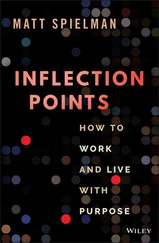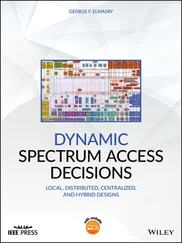
It was clear this would be more than a funding dispute. The moral questions were profound: Is a frozen embryo a human life? If so, what responsibilities do we have to protect it?
I told Margaret and Deputy Chief of Staff Josh Bolten that I considered this a far-reaching decision. I laid out a process for making it. I would clarify my guiding principles, listen to experts on all sides of the debate, reach a tentative conclusion, and run it past knowledgeable people. After finalizing a decision, I would explain it to the American people. Finally, I would set up a process to ensure that my policy was implemented.
To run the process, Josh tapped Jay Lefkowitz, the general counsel of the Office of Management and Budget, the agency that would oversee my funding policy. Jay was a thoughtful and lively lawyer from New York with a serious commitment to his Jewish faith and a dry sense of humor. I liked him immediately. That was good, because we were going to spend a lot of time together.

With Margaret Spellings and Jay Lefkowitz. White House/Eric Draper
Jay loaded me up with background reading. He included articles from medical journals, writings on moral philosophy, and legal analyses. The reading he sent spanned the spectrum of viewpoints. In Science magazine, bioethicist Dr. Louis Guenin argued, “If we spurn [embryonic stem cell research], not one more baby is likely to be born. If we conduct research, we may relieve suffering.”
Those on the other side of the debate argued that government support for the destruction of human life would cross a moral line. “Embryonic stem cell research takes us onto a path that would transform our perception of human life into a malleable, marketable natural resource—akin to a cattle herd or copper mine—to be exploited for the benefit of the born and breathing,” bioethics expert Wesley J. Smith wrote in National Review .
At its core, the stem cell question harked back to the philosophical clash between science and morality. I felt pulled in both directions. I had no interest in joining the Flat Earth Society. I empathized with the hopes for new medical cures. I had lost a sister to childhood leukemia. I had served on the board of the Kent Waldrep National Paralysis Foundation, an advocacy group led by a former Texas Christian University football player who had suffered a spinal cord injury. I believed in the promise of science and technology to alleviate suffering and disease. During my presidential campaign, I had pledged to follow through on the commitment Congress made in the late 1990s to double funding for the National Institutes of Health.
At the same time, I felt that technology should respect moral boundaries. I worried that sanctioning the destruction of human embryos for research would be a step down the slippery slope from science fiction to medical reality. I envisioned researchers cloning fetuses to grow spare body parts in a laboratory. I could foresee the temptation of designer babies that enabled parents to engineer their very own blond-haired basketball player. Not far beyond that lies the nightmare of full-scale human cloning. I knew these possibilities would sound fanciful to some people. But once science started heading down that path, it would be very hard to turn back.

The stem cell question overlapped with the abortion debate. It seems hard to believe now, but abortion was not a major political issue when I was young. I don’t remember it coming up much during Dad’s early campaigns or in conversations at Andover or Yale. That changed in 1973 when the Supreme Court, in a decision Justice Byron White called “an exercise in raw judicial power,” deemed abortion a right protected by the Constitution.
The abortion issue is difficult, sensitive, and personal. My faith and conscience led me to conclude that human life is sacred. God created man in His image and therefore every person has value in His eyes. It seemed to me that an unborn child, while dependent on its mother, is a separate and independent being worthy of protection in its own right. When I saw Barbara and Jenna on the sonogram for the first time, there was no doubt in my mind they were distinct and alive. The fact that they could not speak for themselves only enhanced society’s duty to defend them.
Many decent and thoughtful people disagreed, including members of my family. I understood their reasons and respected their views. As president, I had no desire to condemn millions as sinners or dump new fuel on raging cultural fires. I did feel a responsibility to voice my pro-life convictions and lead the country toward what Pope John Paul II called a culture of life. I was convinced that most Americans agreed we would be better off with fewer abortions. One of my first acts in the White House was to reinstate the so-called Mexico City Policy, which prevented federal funding for groups that promote abortion overseas. I supported state laws requiring parental notification for minors seeking abortions. And I supported, signed, and defended a bill banning the grisly practice of partial-birth abortion.
Laura and I were also strong supporters of adoption. After having difficulty conceiving children, it was hard for us to imagine anyone rejecting what we considered a precious gift. Yet as the father of daughters, I could envision the dilemma facing a scared teenager with an unplanned pregnancy. Adoption was such a positive alternative to abortion, a way to save one life and brighten two more: those of the adoptive parents. I was pleased to sign legislation increasing funding for crisis pregnancy counseling centers, as well as to expand tax credits to offset the costs of adoption.
In the long run, I hoped a change in hearts would lead to a change in law, as new technologies like 3-D ultrasounds help more Americans recognize the humanity of unborn babies. I also hoped political leaders would continue to speak out for a culture that values all innocent human life. Bob Casey, the late Democratic governor of Pennsylvania, said it well: “When we look to the unborn child, the real issue is not when life begins, but when love begins.”

Beginning in the spring of 2001, Margaret, Jay, and Karl Rove—who was in close touch with advocacy groups on both sides of the issue—invited a series of distinguished scientists, ethicists, religious thinkers, and advocates to discuss embryonic stem cell research. The conversations fascinated me. The more I learned, the more questions I had. When I delivered the commencement address at Notre Dame, I brought up embryonic stem cell research with Father Ed “Monk” Malloy, the president of the university. When I spoke at Yale the next day, I raised the topic with Dr. Harold Varmus of the Memorial Sloan-Kettering Cancer Center. At a birthday party for a doctor in the White House Medical Unit, I asked all the physicians there what they thought. As word got out that I was seeking opinions, I was bombarded with input from Cabinet secretaries, staffers, outside advisers, and friends.
Of course, I asked Laura for her advice. Her father had died of Alz-heimer’s, her mother had suffered from breast cancer, and she held out great hope for the possibility of new cures. But she worried that advocacy groups would overpromise what embryonic stem cell research could achieve, leaving desperate families with dashed hopes.
Members of the scientific community presented two main arguments in favor of funding embryonic stem cell research. First was the medical potential. Researchers told me there were millions of Americans suffering from diseases that might be alleviated through treatments derived from embryonic stem cells. Experts believed that only a few stem cell lines would be needed to explore the science and determine its value. “If we had ten to fifteen lines, no one would complain,” Irv Weissman, a prominent researcher from Stanford, told the New York Times .
Читать дальше













